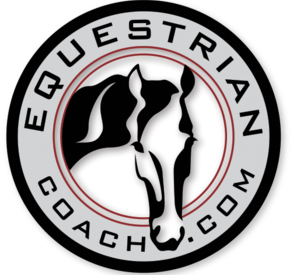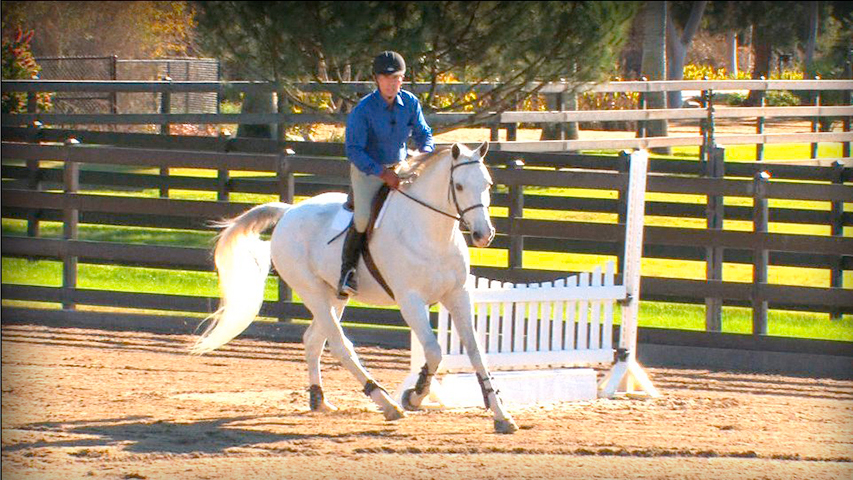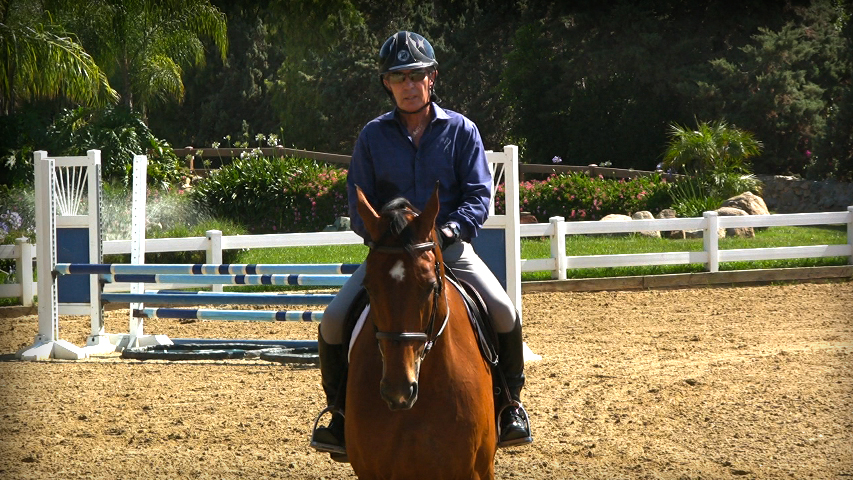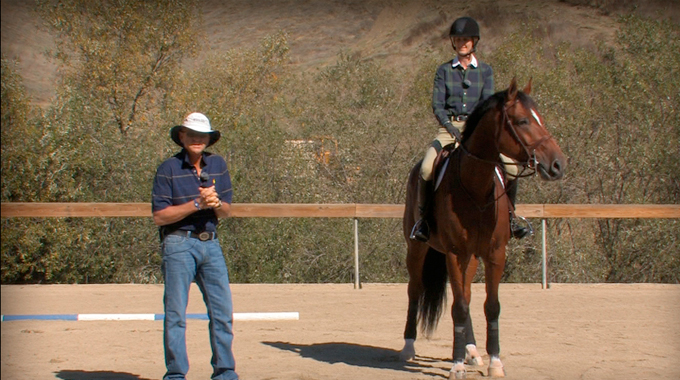Julie Winkel
- 12 Sep, 2017
- 0 Comments
- 4 Mins Read
Does Your Horse Change Leads In Front But Not With Their Hind End?
Submitted by member: Tori
I need help with flying changes. My horse will change in front but not back.
Answer by Julie Winkel
As far as lead changes go, horses just need to learn how to shift their balance off the new inside shoulder to the opposite hind leg and move their haunch in towards the new lead at the moment of suspension of the gait. It’s important that the rider understands the mechanics of the lead change in order to explain it to the horse.
Horses that are poorly trained become confused and anxious about changing the lead, which often causes the horse to rush, lean in, and because they are off balance, change the front lead without the hind. Then it becomes very difficult to get the hind lead once the horse has changed in front. I often see educated horses pulled off their lead while on course because the rider over uses the inside rein, causing the horse to fall in and at the same time push the hind leg out. It needs to be just the opposite. So with young, green, or difficult lead changers, the dominant rein needs to be the outside direct to slow the horse down and displace the hindquarter to the inside. The rider’s outside leg is at the back of the girth to encourage the hind leg to move in. The inside rein is indirect towards the horse’s opposite hip to transfer weight off the inside shoulder towards the opposite hind leg.
My favorite exercise to explain this to the horse is a leg yield-head to the wall. In this exercise the horse is positioned at a 45 degree angle to the wall/rail. The rider then sends the horse, first at a walk, down the rail without losing the position. There is no bend in the horse’s body and the horse is on four tracks. The rider keeps the head & neck straight with a bearing rein (both hands sideways towards the opposite direction of movement) while the horse responds to the leg. A stick is a good tool to help educate the horse if they don’t move off the leg. Once the horse understands, go forward as reward. Next try the exercise at a collected trot, then collected canter, until you can displace the hindquarters easily. The exercise needs to be mastered in both directions. After that, canter through a half turn, heading back towards the rail at a 45 degree angle. Collect the canter and ask for leg yield head to the wall in the new direction. If you have done your homework, your horse will understand you are asking him to move his hindquarters without leaning in with his shoulder. The lead change comes naturally!
Do not drill lead changes! If your horse doesn’t understand, slow down, go back to the walk and explain again—leg yield-head to the wall!
Good luck and do a good job of explaining and understanding the lead change mechanics yourself. 😊
Video Recommendations:
Fundamentals of Flatwork – Part 1 – Basic *Chapter 3E
Bernie Traurig
The first of the series, this video outlines a simple, progressive method of flatwork for all jumping disciplines. It focuses on the training of a young or inexperienced horse with the aim to achieve obedience to light rein and leg aids, and assumes the rider is familiar with the proper techniques of riding and jumping. But you do not have to be a highly experienced or seasoned rider because Bernie’s strategies are clear, straight-forward, classic and timeless. The Basic level highlights his favorite exercises that can be incorporated into anyone’s training program.
Running Time: 46 minutes and 25 seconds
Fundamentals of Flying Changes
Bernie Traurig
Here is an in depth look at the building blocks that are required for a perfectly executed flying change. In this topic Bernie breaks down and examines each component of a flying change and demonstrates exercises that will give your horse every opportunity to change leads on cue.
Running Time: 16 minutes and 32 seconds
Flying Changes
Val Renihan
In this topic Val Renihan breaks down the flying change in order to defuse the horse’s nervous anticipation of the flying change. Her exercises produce the relaxed, supple changes needed for winning equitation and hunter rounds.
Running Time: 15 minutes and 13 seconds
Setting Up The Lead Change
Team Karazissis
In this session Team Karazissis describe & demonstrate exercises that establish direct communication to the three main parts of the horse & stimulate the haunch in order to facilitate the lead change.
Running Time: 12 minutes and 21 seconds
Have Something You Want to Ask Our Panel of Experts?
Ask The Experts is the ultimate way to get help from the top professionals in the equestrian industry without leaving the comfort of your home. This service is available to Monthly, Annual and Lifetime Members of EquestrianCoach.com.





